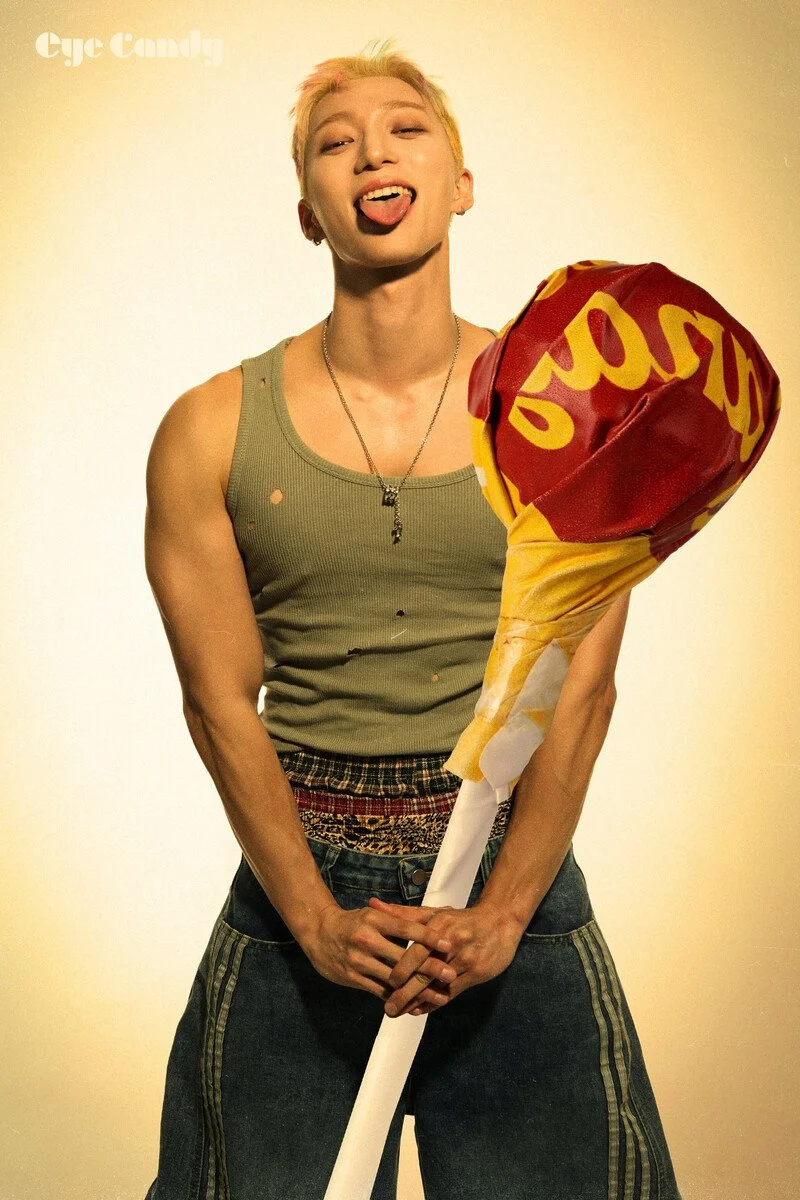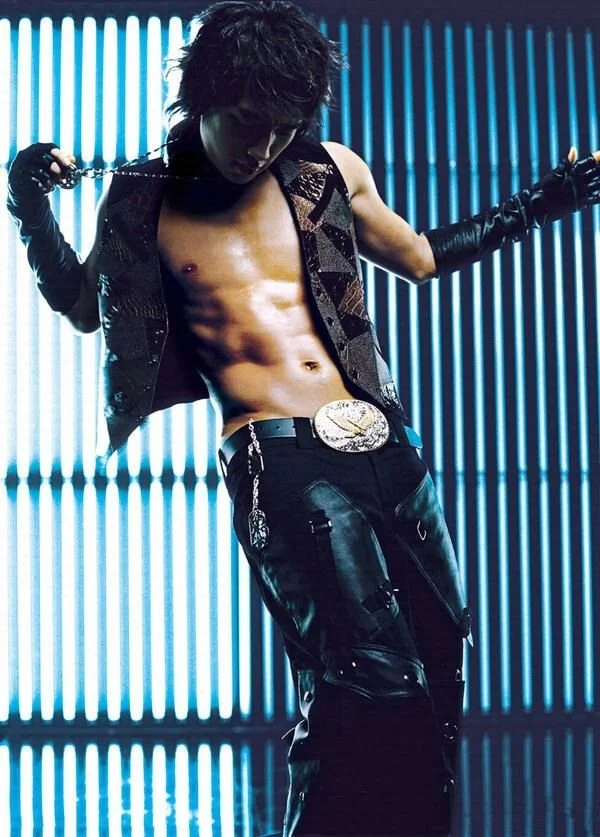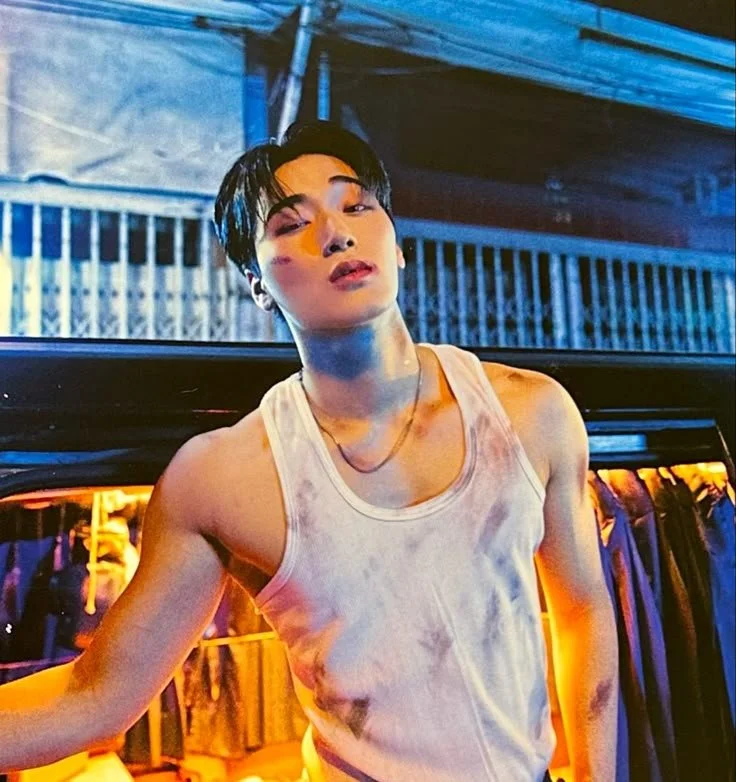From Rain to Kai, ATEEZ’s San and from20: How Male Sexuality Has Evolved in K-Pop
A new generation of male idols are embracing a fluid view of sexuality. It’s a major course correction from years’ past.
from20 in a promo image for “Eye Candy”; WAY BETTER
There was a time, not even ten years ago, that the mere thought of a queer K-Pop idol seemed inconceivable.
Instead, a decade ago, K-Pop’s second generation of male idols had two roles they could play: the straight bad boy or the wholesome (straight) boy you could marry. Both ideas were limiting, and by most accounts, boring. When boy groups experimented with their sound, the result often sounded like EXO’s “Monster”, a powerful dance track with highly athletic, aggressive choreography. “You can call me monster,” they’d sing — because vulnerability was never something K-Pop idols could portray.
But this year, many of those same idols are beginning to push back on the boundaries they were confined to. The most audacious play comes from KIM RAEHWAN, who performs under the stage name from20. In the mid-2010s RAEHWAN was a member of Big Star, a nugu K-Pop group signed to Brave Entertainment, the same company that debuted Brave Girls
Big Star never achieved superstardom like EXO, who were active around the same time and from a much more powerful company. Throughout their seven years together, they released tracks like “Run&Run” that reached modest success. When they disbanded in 2019, it felt almost inevitable that RAEHWAN would struggle to continue working. But that is not how this story goes, and in a twist that is exemplary of how far K-Pop has come on a global scale, RAEHWAN has found the biggest success of his career as a provocative, independent artist.
Today, as the CEO of his own label WAY BETTER, from20 has produced a viral smash.
On Friday, he released “Eye Candy”, a bisexual anthem that declares in the opening chorus: “Hype girls and boys love the candy/ Suck it, lick it, taste it, baby”. In the video, from20 dances in a locker room, shirtless, among football players. He does body rolls and flexes his muscles. In promo images, as if to further accentuate the ridiculousness of it all, from20’s face is covered with a rubbery liquid that resembles (gasp) cum.
The rollout for “Eye Candy” is sexually charged for sure, but also humorous. The imagery is a wink to viewers. Idols are not supposed to be this liberated or sexual. idols are especially not supposed to be out and bisexual. But from20 didn't start his label WAY BETTER to play by the rules. He’s creating his own handbook for men like him who want to shed the narrow view of how a male K-Pop idol can portray himself.
The “Eye Candy” video is also the most blatant statement from20 has made about his sexuality, something that he has hinted at with previous releases. One of his best releases from 2023, “BAD REVENGE” seemed to reference Lady Gaga’s iconic single “Bad Romance”, while the music video put a queer spin on the Terminator franchise. But from20’s work also extends to directing (he directed the videos for “Eye Candy” and “BAD REVENGE”). Some of his best collaborative work has come with HELLO GLOOM, a co-founder of WAY BETTER. In 2023, from20 directed HELLO GLOOM’s “Dancing in the Dark” video which he set in a queer bar and featured drag queens.
Kai in a promo image for “ADULT SWIM”; SM Entertainment
There are very few K-Pop artists as willing as from20 to engage with over queer themes, yet there are some who are open to using queer aesthetics to their advantage. Take for example, Kai, the popular soloist from EXO, whose recent single “Adult Swim” uses every metaphor imaginable for intercourse. You can hear it most clearly in the raunchy pre-chorus: “No specific destination/ Let’s increase the speed a bit more/ Keep pulling me in/ Together, into the deepest place.”
In the video, which is set at a public swimming pool, Kai dances and thrusts his hips while wearing a crop top. He clasps his chest and body rolls as he whips his blonde hair around. Kai’s skill as a dancer is what made him a standout in EXO. Kai’s use of his body is both athletic and graceful – he can make his movements look fluid and easy without ever showing you the work.
But Kai’s image as a soloist is far more evocative than when he was a member of EXO. I’ve been impressed since his solo debut – the raunchy single “Mmmh” – with how he’s used sexuality to portray himself as a lathario or seductor. HIs role in EXO could often seem one dimensional due to a very functional, rote view of masculinity. But as a soloist, especially as he released his second EP “Peaches”, Kai has embraced a dreamier, sensual look. “Adult Swim” continues this – the crop top is a charmed look, one that you would have never seen EXO members wearing at the height of their fame.
Unlike from20’s video, “Adult Swim” is tame. The most suggestive shot comes at the opening in a blink-and-you-miss-it moment of a popsicle suggestively melting with drops that, yes, also resembles cum. But Kai, who like from20 is now in his thirties, doesn’t shy away from the topic of sex. His approach is just less overt: You know what he’s talking about even if he doesn’t have to explicitly show you.
Promo images for Rain’s “It’s Raining”.; JYP Entertainment
For the past two decades, male sexuality has been a powerful selling tool for K-Pop. In the mid-aughts as K-Pop began to take shape as a global force, it was Rain, JYP Entertainment’s first soloist, who was the best connoisseur of infusing sex into performance.
In a review of Rain’s show at Madison Square Garden in 2006, Jon Paralleles of the New York Times described one key interaction:
“‘I'm lonely,’ he announced, ‘I need a girlfriend,’ and he brought a young woman onstage from the audience, handing her a teddy bear and a bouquet of roses before giving her a chaste hug.”
Rain’s appeal was in a visual contradiction: he had an innocent face and a body that was sculpted to resemble a Greek god. To accentuate this, Rain would often perform shirtless or in a wife beater, thrusting and grinding to tracks like “It’s Raining” before slowing down and switching to a single about marriage (“I Do”). This dichotomy could be jarring but it is exactly why Rain became a force in Asia.
But Rain’s use of sexuality was always strictly heteronormative. His stage costumes were never inspired or high fashion. They were simply functional to dance in. Rain’s narrow portrayal of masculinity was reinforced by the acting roles he chose: On his breakout drama show, “Full House”, he played Lee Youngjae, a self-absorbed, sexist actor who mistakenly buys the family home of a girl who eventually becomes his wife.
Lee Youngjae is the kind of man who expects his wife to cook, clean and scrub the bathroom floor (as he orders her to do in multiple episodes) while he lays around and reads all day. Yet in 2004, when the show premiered, it reflected the Confucianism, patriarchal values of Kroea, where a man is the head of the household and the chief decision maker.
In 2006, Rain starred in “A Love to Kill” and played a martial arts fighter. Rain beefed up for the role, and engaged in a strenuous fitness regime to bulk. He jumped rope 2,000 times a day and only ate chicken breast and mackerel, as he proudly told Korean journalists.
But by the end of third generation K-Pop, Rain’s brand of masculinity was beginning to fade out.
ATEEZ’s Choi San in a promo image for “BOUNCY”
Still, there are direct connections to the image Rain sold in his twenties to the chiseled look of someone like Choi San from ATEEZ. Both men use their bodies to titillate and to sell their work but San’s approach is more theatrical, if not wholly innovative – and that is in his performance.
As I’ve become a fan of ATEEZ, San’s fancams have become my favorite to watch: He is an actor on stage. Watch, for example, how he feigns indifference while miming walking in the final stretch of “Ice On My Teeth” or how he displays the ultimate form of machismo as he bends his back to the floor on “Bouncy”.
Throughout all of San’s performances, I am most struck by how he performs masculinity. In some performances he quite literally punishes his body as he pushes it to the limit, such as a stage for “GUERILLA”, where San nearly passes out from how hard he nails the choreography. In one of my favorite performances, such as an Inkigayo stage for “Bouncy”, he is dressed as a boxer and plays the role, as best as I can describe it, of a cocky heartthrob. His face can display a wide range of emotions: nonchalance, utter confidence, seductive suitor – all within the span of three minutes. Watch in “Bouncy” how, at the end of the first chorus, he looks around the stage with a smirk on his face before whipping his head around and locking in. That’s a performance, baby.
Yet the primary difference between Rain’s showmanship and these three idols is the gaze. Who are these performances for? I would wager for both queer and female audiences. Many of the contemporary men of K-Pop make music and visuals that play with queer aesthetics. They position sexuality as something light or playful. They costume themselves in outfits that could easily be worn by female idols. They seek pleasure and yearn to have their sexual curiosities satisfied. But most importantly, they are unafraid of engaging with a fluid concept of sexuality.
For idols like from20, there is a freedom in objectifying themselves. The K-Pop industry does it every day by mass producing photocards which are then sold, traded and sought after by millions. When from20 playfully exploits his body with “Eye Candy” it’s not just an act of artistic autonomy, it’s also one of liberation.






